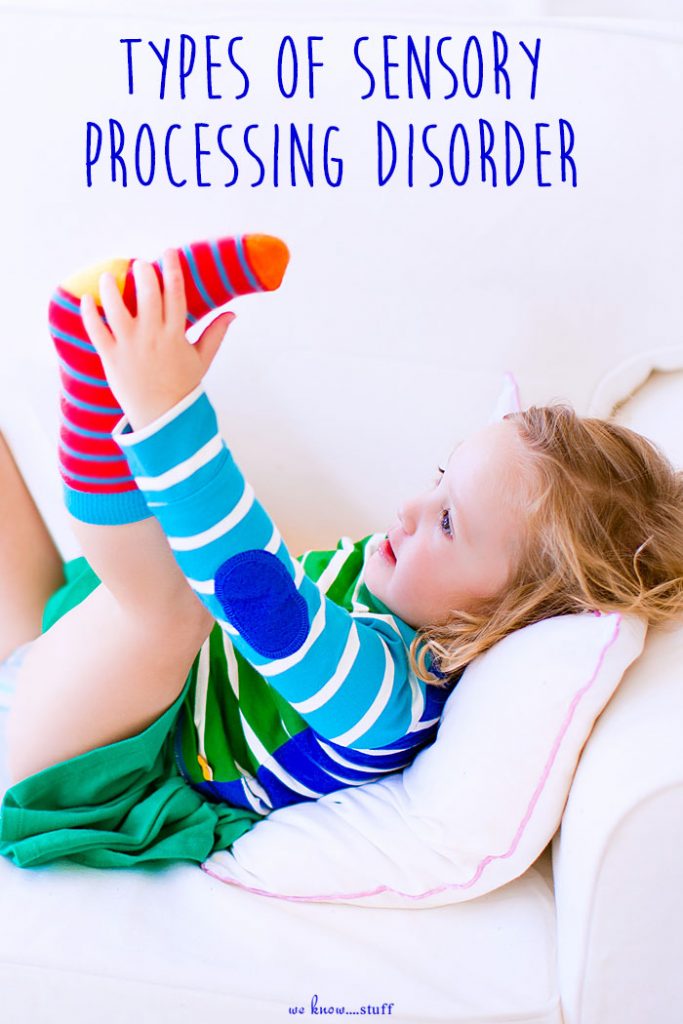Types of Sensory Processing Disorder: A basic guide to sensory seeking versus sensory avoidance behaviors in children.
Psst! We just want you to know that there are some affiliate links in this post. Your price always stays the same, but we may make a small commission off of your purchase.
It’s a new year, a natural time to consider new things as well as brush off a few old ones. One I’ve chosen to touch on is Sensory Processing Disorder. For some of you, this will be a refresher, while for others this will be a new concept worth pursuing. We’re going to keep the discussion “light”, going over the highlights, hopefully digging a little deeper on the subject throughout 2016. Consider this post the “diet” version.
Sensory Processing Disorder (SPD) is a concept that is currently undergoing scrutiny. For those of us who don’t like eating lumpy food, or have children that bristle at the existence of sock lines, SPD isn’t up for questioning. It’s very, very real and impacts day to day life and living. For those on the Autism Spectrum, it is believed that the majority experience some level of SPD. But SPD isn’t relegated just to those on the Spectrum.
Sensory Processing Disorder can be explained as the brain misinterpreting sensory stimuli.
Here are just a few examples to give you a light taste of SPD. Delving deeper into Sensory Processing Disorder can be quite complex, and this is merely a simple overview.
A Simple Taste: Types Of Sensory Processing Disorder
1.) Hearing
For those who are sensory avoiding (looking to avoid the sensory situation, also sometimes known as over-responsive or defensive), movies may not only seem extra loud, but the volume may actually cause physical pain. Sometimes, sounds such as a brother or sister chewing gum can cause incredible irritation.
For those who are sensory seeking (looking to increase sensory stimulation, but can also be considered as under-responsive if they seem to be unable to interpret sensory stimuli*), the exact opposite may occur. Instead of running for earplugs when the radio is on, someone with this may turn it up as loud as they can. On the flip side, they may not always respond to their name being called. In either case, they are not trying to avoid the sensory stimuli.
2.) Sight
For those who are sensory avoiding, fluorescent lights are often known to be a source of irritation. Shopping at malls and large stores may be visually difficult, and even result in headaches. Likewise, brightly painted rooms may prove overwhelming.
For those who are sensory seeking*, they may look to soak in the bright lights, flashing lights, bold colors and any other visual stimuli that will heighten the sense of sight.
3.) Taste
Do you have a super taster in your family? We sure do! My daughter detects flavors that most overlook. This is probably one of the easier analogies to provide as most of us know at least one picky eater – and that person may be ourselves!
On the opposite end*, folks could seek out intense flavors, or have difficulty tasting the difference between flavors.
4.) Touch
For those who are sensory avoiding, probably the best known example of this is….socks. Something my daughter pulled off the minute she arrived home from school every day up until graduation, even in -5 degree weather. It can also be avoiding certain food textures.
For those who are sensory seeking*, he may take in stimulation via squishy hugs, or may have no idea when he bumps into things.
5.) Smell
For those who are sensory avoiding, even the slightest perfume can be annoying or cause discomfort.
For those sensory seeking*, they may spray air freshener a bit too thickly. Or, if they are on the flip side, they may be unable to detect many smells, and this may include things such as food burning.
Sensory Processing Disorder is such an important topic and, as you can see from some of our “light” examples, can be problematic, even dangerous. (Think of our last example of not being able to smell burning food.)
If you have any specific questions or sensory processing concerns you’d like addressed this year, drop a note and Denine, Daniele or I will definitely see what we can do to point you in the right direction. Meanwhile, I highly recommend this site, the Sensory Processing Disorder Foundation for myriad of resources. They are absolutely amazing and definitely worth checking out!
~Julie


Leave a Reply